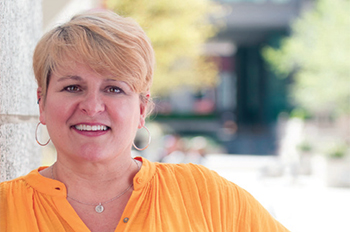
When I was a reporter right out of college (many years ago), I worked for a community newspaper in rural Kentucky. Over the police scanner one day came the news of a shooting fatality. I raced to the scene to learn that a young boy had shot and killed his older teen sister. I think the boy was 9 or 10 years old at the time.
The parents were not home, and the two siblings had been arguing. The boy locked himself in a bedroom where there was an unsecured firearm. His sister was banging on the door when he fired through it and killed her. I don’t remember the outcome, but I do recall seeing his small head through the back window of the police car as they drove him away. That image will always stay with me.
Guns are now the leading cause of death for children and teenagers, notes Sarah Burd-Sharps in this issue’s cover story about gun violence. Burd-Sharps, senior director of research at Everytown for Gun Safety Support Fund, says nearly six in 10 gun deaths are by suicide, and the rate of gun deaths in the U.S. is 26 times greater than in other high-income countries.
“I think it’s hard to walk away from those statistics and feel anything other than that it really is a crisis,” Burd-Sharps says. She adds that the ripple effects of gun violence extend beyond those who are directly impacted.
Our article includes prevention efforts, research, and the social work role in helping respond to, reduce or prevent gun violence. Another good resource is NASW’s Gun Violence page
Our second feature article examines the value of palliative care but notes it is often underused and misunderstood. Messaging and education can help remedy this, but there also is a troubling workforce shortage in this area of social work, says Myra Glajchen, DSW, MSW, ACSW, APHSW-C. In response, Glajchen developed the ESPEC (Educating Social Workers in Palliative and End-of-Life Care) program. The training program launched in 2021 in collaboration with NASW.
“While historic and current challenges are many,” Glajchen says, “I remain optimistic that education and training can help toameliorate these shortfalls, level the playing field with other disciplines, and empower social workers to work to the top of their licenses.”
In the Association News section, you can read about NASW’s Legal Defense Fund, which has worked to defend and protect our members and the broader social work profession since 1972; the inspiring social work students who are the recipients of this year’s NASW Foundation scholarships; articles about our New Hampshire and Missouri chapters; and much more.
We hope you enjoy this issue of Social Work Advocates. You can write to us at swadvocates@socialworkers.org.
Until next time,
Laetitia